Why Your Calendar Changes Every Year
Did you know that Lunar New Year and Hari Raya Puasa are projected to overlap in 2029, 2030, and 2031? What causes these festive dates to shift each year, and why aren't our calendars stable markers of time? Senior Science Educator Meng Hwee Lim explains.
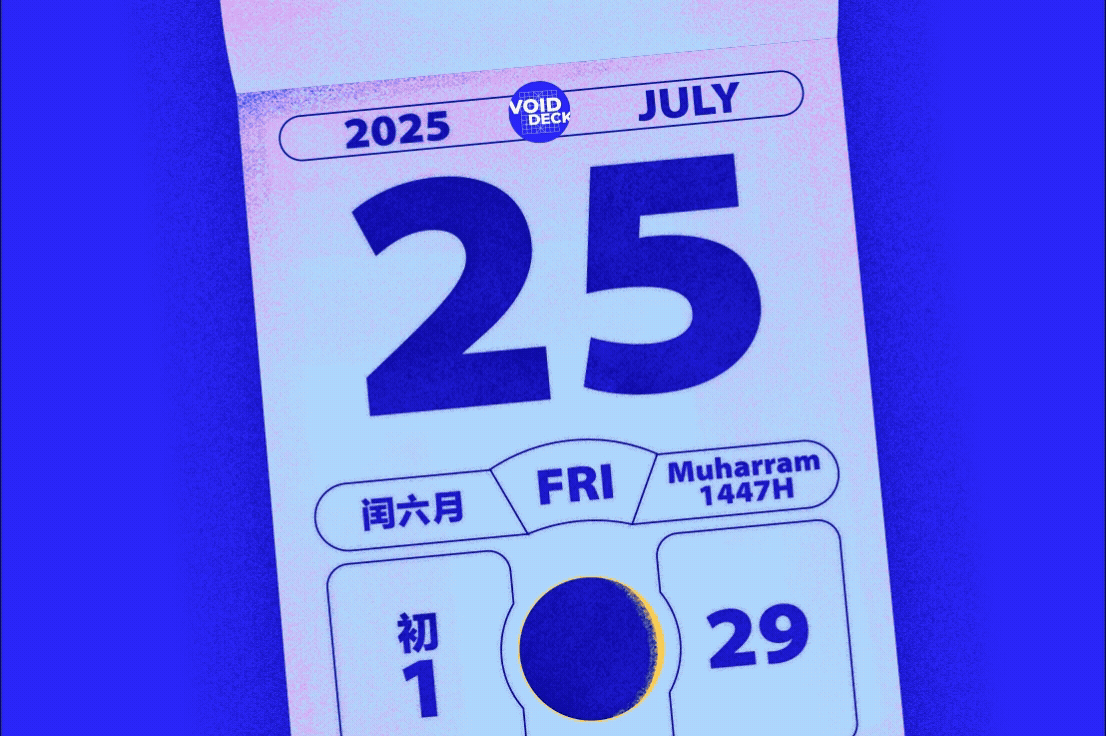
Comparison of the Western calendar 25 July date with its equivalents in Chinese and Islamic calendars across various years. Animation credits: Ai Xin Qin.
Calendars are strange things. Although a calendar may seem like a reliable way to measure the passage of time, what we call a day, week, or month do not match the movements of the Earth, Sun, Moon, or stars with total accuracy. As a result, we need to invent new methods of dividing and codifying time: every few years, one needs to add in an extra day (what we call leap years) or even a whole extra month. But having a universal standard of tracking time is a system that we cannot do without, and so we need to submit to the will of the almighty, albeit imperfect, calendar.
What is the primary function of a calendar? Calendars indicate the passing of the seasons and when we are supposed to do certain things, like when to sow the seeds and when to harvest the crops, when to celebrate someone's birth or passing as a special occasion. We know spring starts on roughly on the 21st of March on the spring equinox where the days start to become longer in the Northern Hemisphere —that is when planting should start. We also know when to celebrate key religious festivals, for example, Christmas, which is observed on 25th December. These are just some of the important tasks we assign to the calendar. But how did we form a calendar that tells us the above?
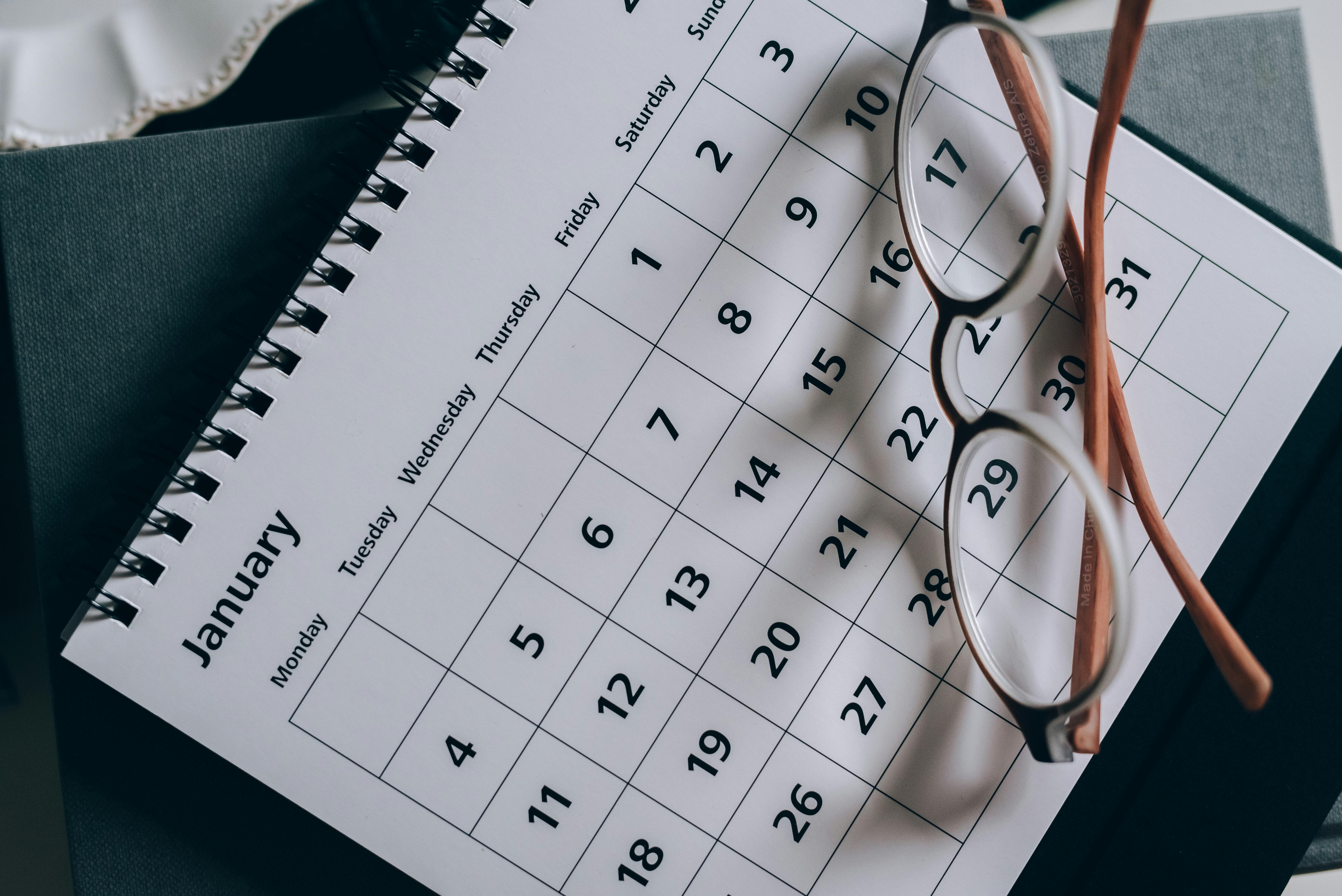
Photo Credit: LeeLoo The First/Pexels
Gregorian Calendar
The described calendar uses the rising and the setting of the sun to mark and form the calendar, counting the number of days before or after certain events to set out the dates. We call this a solar calendar, but it is more widely known as the Gregorian calendar. Invented in 1582, it is mainly used in the Western world, and remarkably, this centuries-old method still dictates how we set our days and dates internationally.
But there are many other cultures around the world that have formed their own calendars. Consider, for example, the Chinese lunar calendar and the Islamic calendar.
Chinese Calendar
Let's start with the Chinese lunar calendar. Counter to its name, it is not just a lunar calendar but what we call a lunisolar calendar. In other words, it takes into account the daily rising and setting of the Sun as well as the changing phases of the Moon. It is most likely done this way because the calendar is used as an agricultural calendar and most likely a religious or cultural one as well.
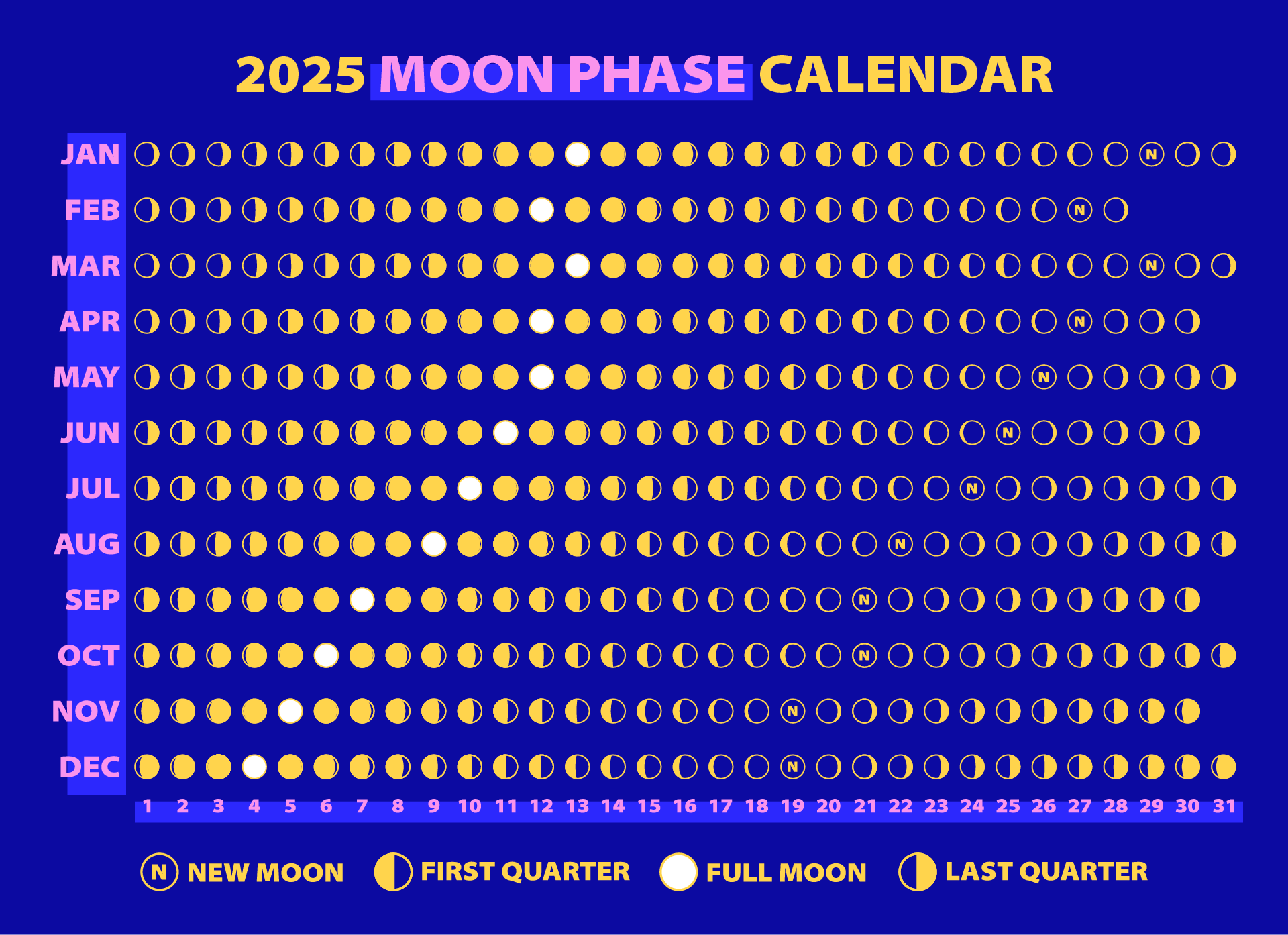
2025 Moon Phase Calendar. Illustration Credit: Ai Xin Qin.
The first day of the month always starts with the new moon phases of the moon, and a month ends when the next new moon starts. This goes on for 12 months. On average, there are 12 full moons in a year so this lines up perfectly! Those of you who know your moon facts or the calendar itself will notice a problem right away.
The phases of the moon last for about 28-29 days, so one will end up with some missing days at the end of the year, 11 days in fact! The Chinese came up with a great solution: just keep following the moon phases, and in about three to four years, you will end up with enough missing days to add a whole entire month into the year. That year will have 13 months, just like this year (2025), where there will be two 6th lunar months. This is part of a larger pattern between the Sun and Moon that lasts for 19 years, known as the Metonic cycle. In these 19 years, there will be 12 years with 12 months, and 7 leap years with 13 months.
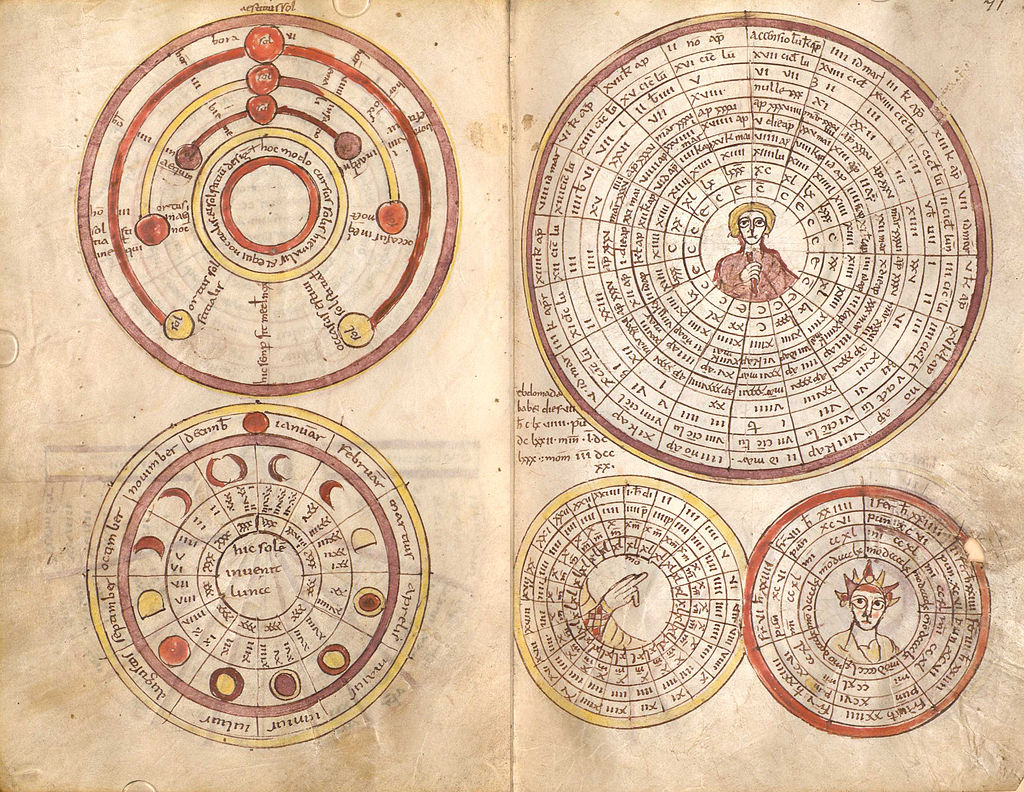
Depiction of the 19 years of the Metonic cycle as a wheel from a 9th-century computistic manuscript made in St. Emmeram's Abbey. Photo Credit: Bavarian State Library, Public Domain/Wikimedia Commons
But why go through all the trouble of tracking the days and months? Because, like their Western counterparts, the Chinese also use this calendar to tell them when to start planting and when the new year starts. Adding this extra month somewhere makes it such that the planting and harvesting seasons fall roughly around the same time every year, give or take a few weeks. This way the seasons and the calendar roughly lines up, making it easy to plan ahead to stockpile food and prepare for upcoming festivals which usually start on the new moon.
Also, it makes the moon an easy sign to determine what stage of the month one is in. Just look up at night, or daytime, and one can roughly guess from the phase and position of the moon how far along one is in that month. Full moon? You are about halfway through the month.
Islamic Calendar
What if you don't add in this extra month and just follow the moon? Well, you end up with a calendar system like the Islamic calendar, which is a purely lunar calendar. The month starts when there is a new moon and ends when the new moon comes again. No need to worry if the lunar month is a little shorter here and there, no need to worry if the 12 months do not add up to a year. This is because the purpose of the Islamic calendar is not agricultural but religious. The calendar is used to determine the dates of important Islamic holidays and rituals like Ramadan and Eid celebrations.
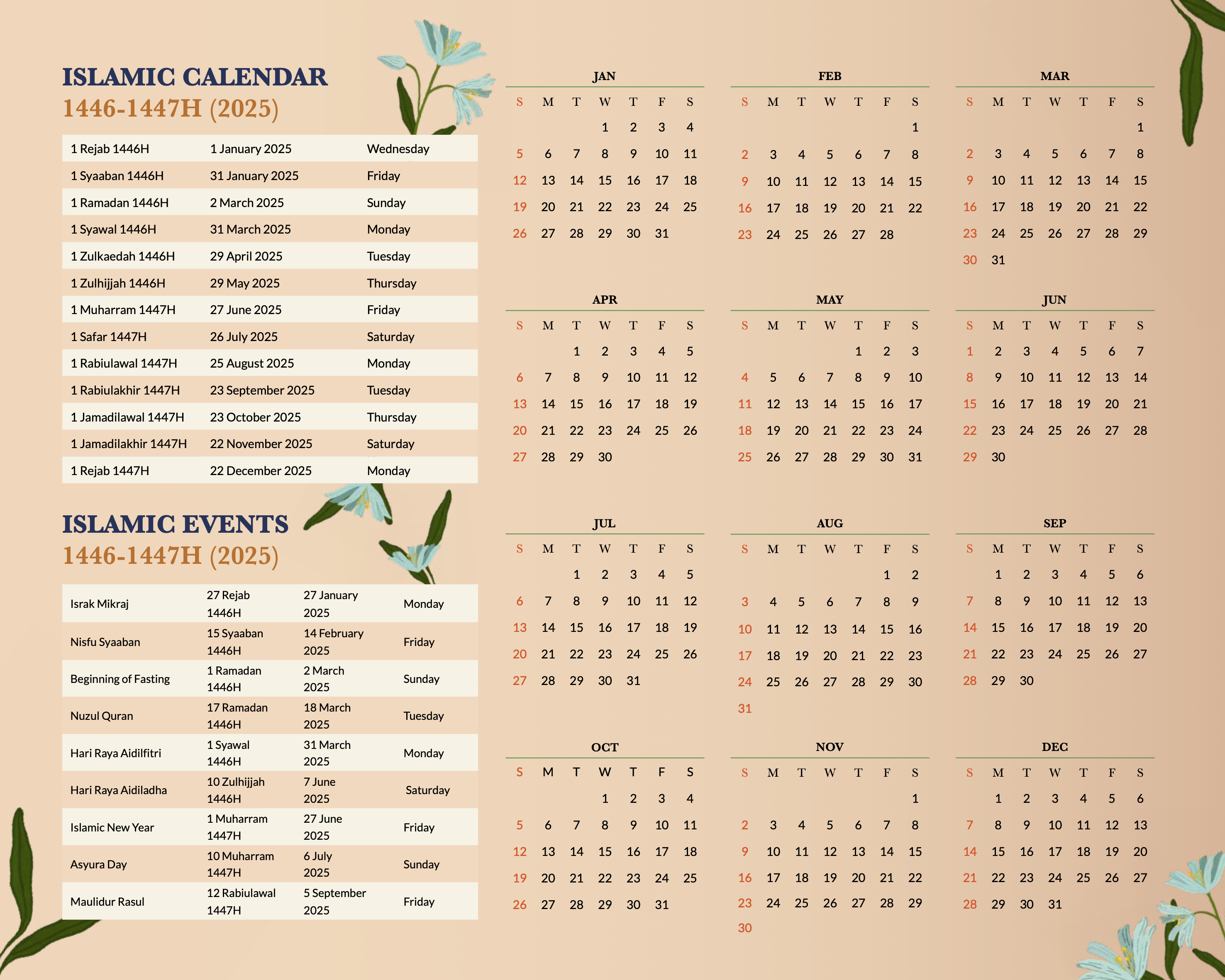
2025 Islamic Calendar. Photo Credit: MUIS
The Islamic calendar consists of 12 months and runs slightly shorter than our Gregorian calendar, again by 11 days. Over some 33 odd years, one would see the Islamic holidays move earlier and earlier in the year and cycle back on itself. At least in Singapore, we would pay closer attention to the fasting month, Ramadan, and the two Muslim public holidays, Hari Raya Puasa and Hari Raya Haji. These religious dates always follow the moon phases to determine when the days of observance starts and ends, as well as when in the year it would roughly fall on. If the months move forward every year, there will be a year where Ramadan starts in January, and 11 full moons later somewhen in December, it would be time for another Ramadan. But 2 Ramadan would also mean 2 Hari Raya right?
As far as I understand, there is an element of fairness in this. It is not felt as much in Singapore because we are located near the equator where the days are of roughly equal length, but if one is practicing Ramadan in other countries located further north or south of the equator, the days can be much longer or shorter, and one starts the fast before the sun rises and breaks fast after the sun sets. Therefore, those who observe Ramadan during the summer will have to endure a longer fasting period as compared to those having to fast during winter. A lunar calendar will slowly move the fasting period across the year so everyone will have about equal fasting periods over the years. I am not the expert in this, but there is a sort of beauty in this arrangement that takes into consideration all Muslims around the world.
Gongxi Raya?
The interesting thing about using the new moon to mark each month for both the lunar and lunisolar calendar is that the Islamic and Chinese calendar months start and end on the same day. With the ever-shifting lunar calendar together with the roughly static lunisolar calendar, there are bound to be days where Chinese and Islamic festive occasions converge.
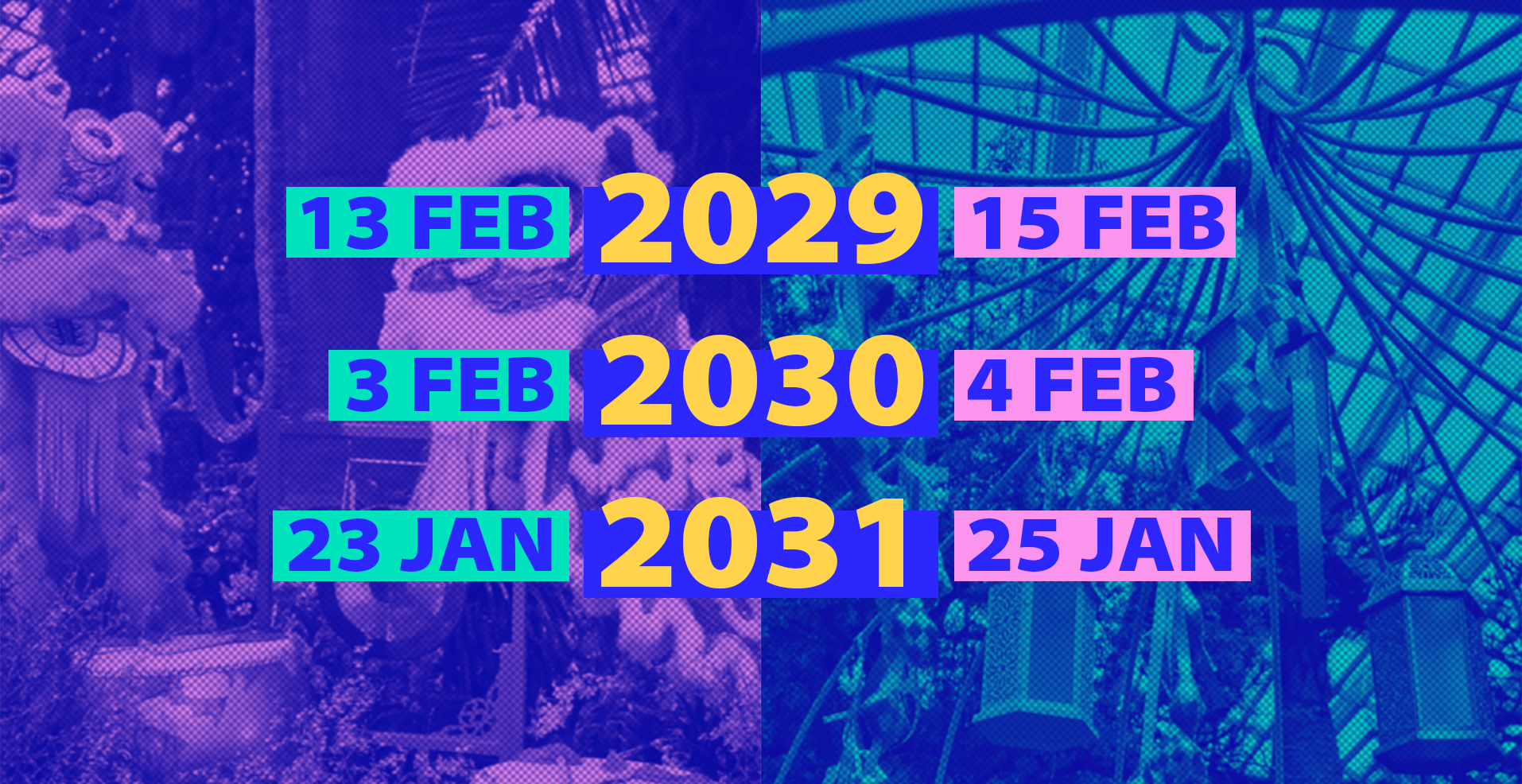
Projected dates for Lunar New Year (Left) and Hari Raya Puasa (Right). Graphic credit: Ai Xin Qin.
For example, Lunar New Year and Hari Raya Puasa are projected to overlap in 2029, 2030, and 2031. The two celebrations will not overlap in 2028 and 2032 as these years are leap years where an extra month is added to the Chinese calendar, thus moving the Chinese and Islamic calendars out of sync with each other. And the increasingly “early” arrival of Islamic holidays is honestly not as rare as it sounds, as every 33 years, the shifting of the festive dates is just a product of following the Moon as it orbits the Earth.
Of course, it is funny how we have adopted this makeshift system to count time. Following the phases of the moon to count months has absolutely no connection to movement of the Earth around the Sun to count years. Throw in the rising the setting of the sun, Earth's rotation, to count days, and we could not come up with a more disconnected way to track time, other than the fact that it is has historically served as the most consistent way to mark the passage of time for our ancestors. Not to mention that the Moon's orbit is getting larger, meaning that the lunar months are very slowly getting longer! So maybe one day in the far future, we will have a proper 12 lunar month year.
For now, I look forward to 2029, where everyone in Singapore will be incredibly busy doing house visits during the Lunar New Year and Hari Raya Puasa double festivities!
Stargazing at Science Centre Singapore's Observatory
Want to know more about astronomy and how the heavenly bodies have affected our daily lives? Enjoy stargazing sessions and digital planetarium live shows led by our passionate educators at Science Centre Singapore's Observatory every 1st, 2nd and 4th Friday night of the month (unless otherwise stated). Follow www.facebook.com/SCOBservatory for the latest updates and get your tickets here: https://programmes.tickets.science.edu.sg.
Written by Meng Hwee Lim
Published 25 July 2025

